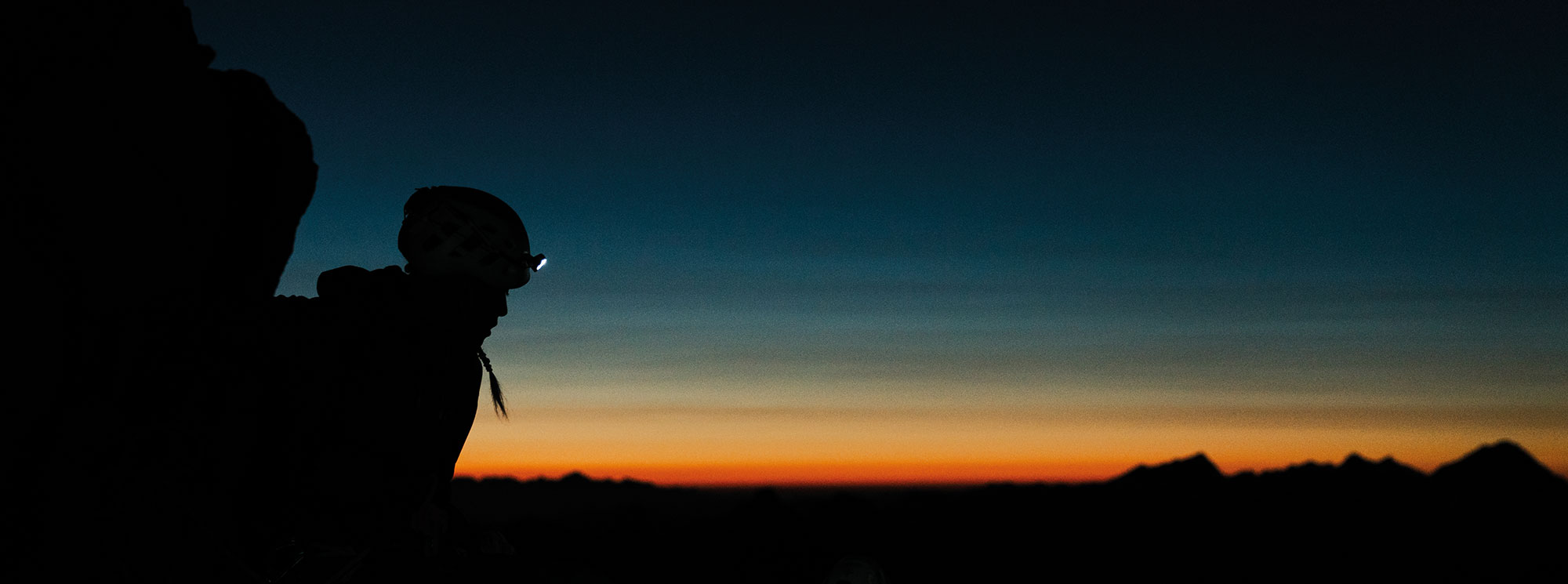With: La Sportiva
By: Matteo Pavana
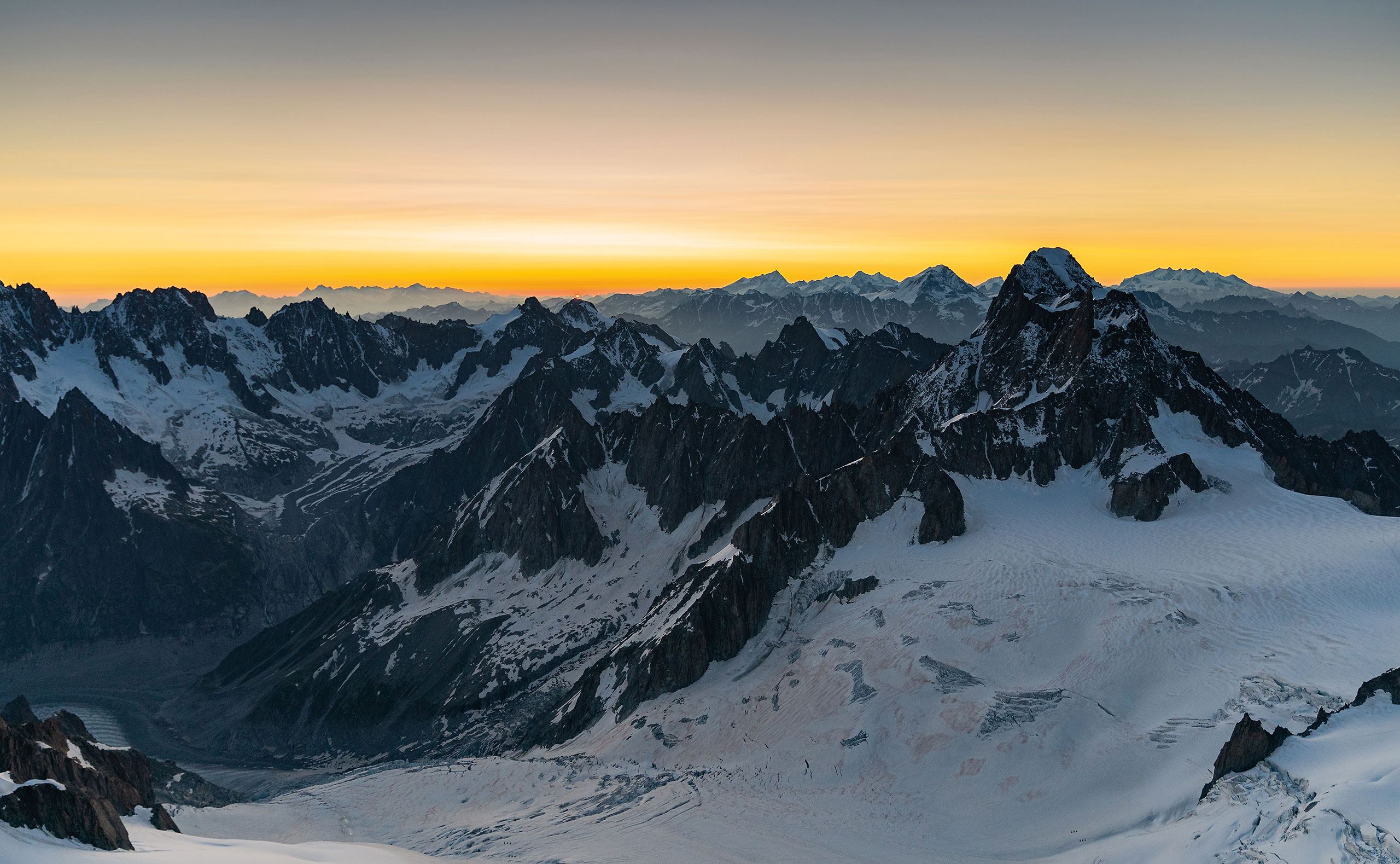
A lesson to (re)learn, the mountain as Teacher
Mont Blanc Du Tacul
45°51′24″N 6°53′16″E
July 20th-21st, 2021
Mom used to tell me: “There’s no time like the present.”
She used to tell that to my bother Marco to death. When a test was approaching, she told him not to wait till the last moment to start studying. But Marco was a stubborn guy. He preferred to go his own way. And for this very reason the grades he got never proved him right.
This was one of the first real lesson I learned as a child: beating around the bush rarely improves situations. There are some things that my mother did not teach me while growing up, I learned them from the mountains, and in the mountains we all know well how much “being prepared” is synonymous not only with results, but also, and above all, with safety. So, if it is true that as a human being, imperfect by nature, I am programmed to make mistakes, the mountain is the second mother always ready to remind me of what I forget, to refresh my memory repeatedly.
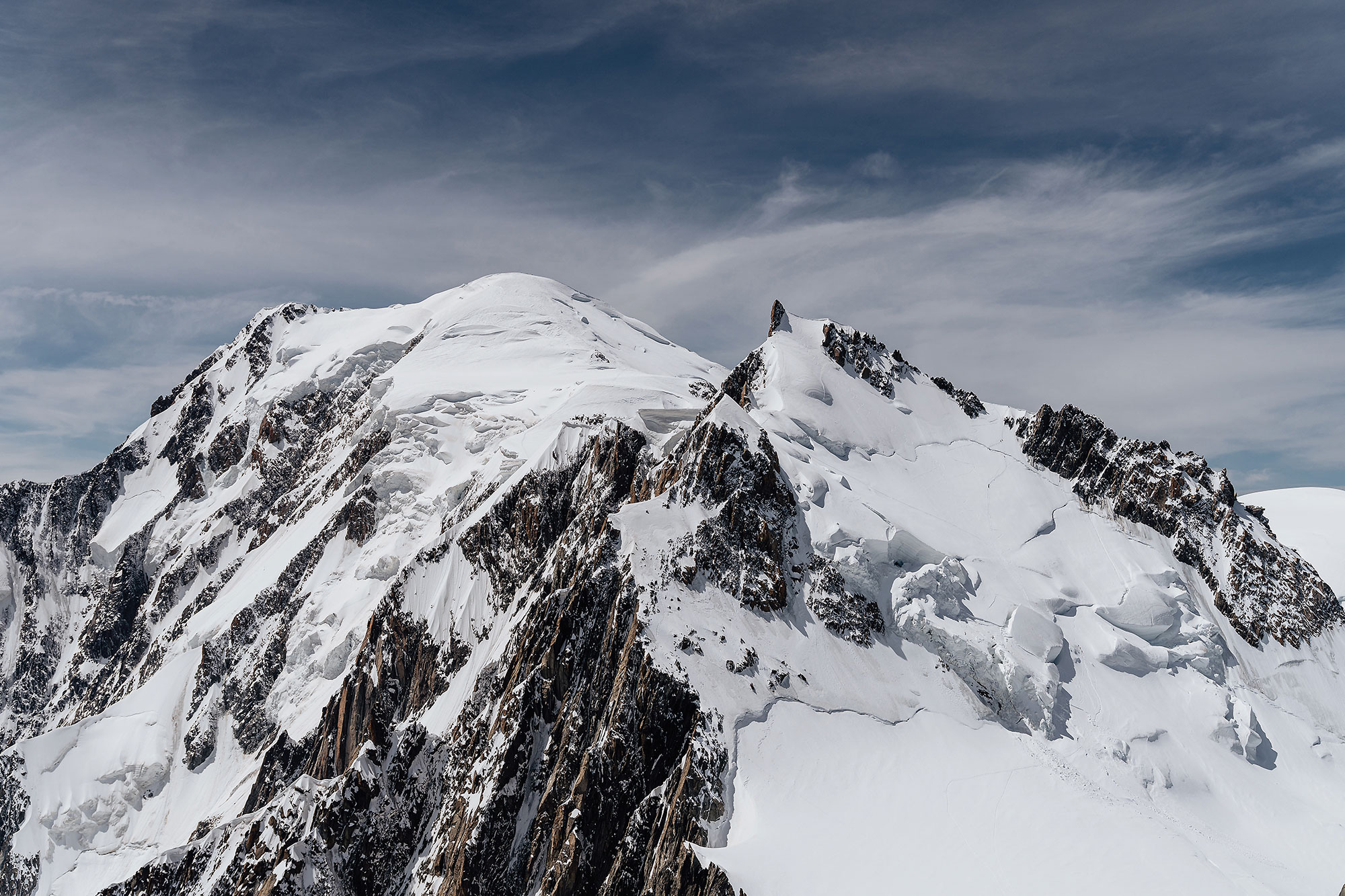
“Did you train a little bit with crampons? Have you spent at least one day at high altitude this year?”
Faletti knows very well that the last time I put my crampons on I was with him on Cima Tosa.
It was April.
“You could have spent at least a couple of days in Ortles at high altitude.”
Of that now distant spring day, only the temperatures remained unchanged. Definitely too high, definitely out of the ordinary. Also on that now distant spring day, precisely because of these exaggerated temperatures, my disproportionate rate of sweating has also remained unchanged, ever closer to that one of an African hippo.
We are walking close Satelliti just to check the conditions of the couloir that we will face tomorrow.
“No Matte. Last time I put crampons on I was on Tosa, remember? Then, since I started the paragliding course, my biggest effort has been to sit in a flying pant.” I catch my breath for a moment. “However speaking of acclimatization seems exaggerated to me! We have to climb to Tacul, not the Himalayas!”
The conversation dies here. I know I’m wrong, but it’s too late to even think about crying over spilled milk.
I add. “I’m with you. And with you I feel safe.”
That’s true. If I had to climb it with another person, I would have to think about it twice, but with Matte I feel safe and sound. Maybe he’s the one who should have some doubts, but that’s another story.
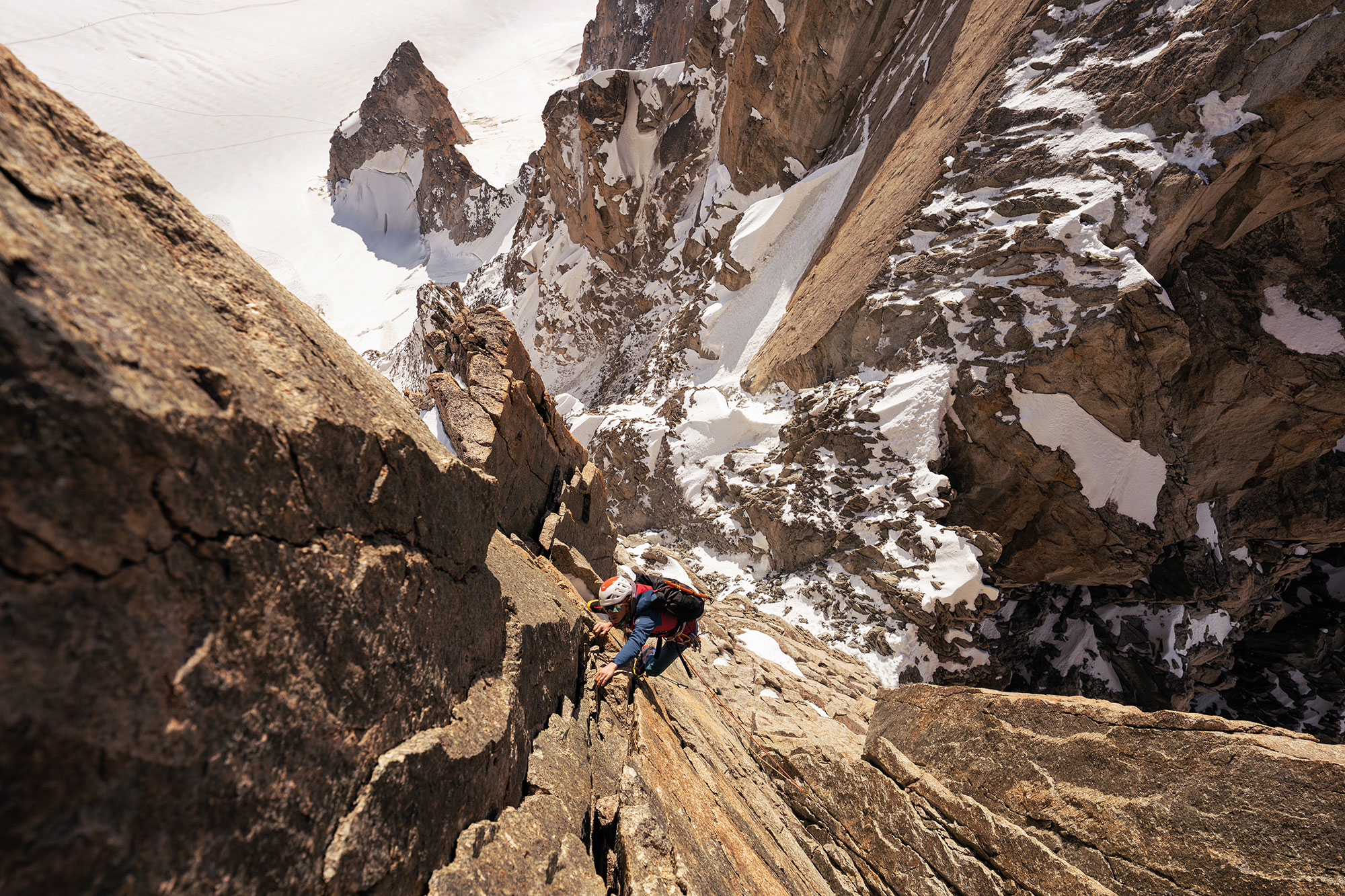
Matte, aka Matteo Faletti, is both an expert mountain guide and a super cool mountaineer. Just like me, he lives in Povo, a small town on the hills of Trento. He’s a generous and easy going person. I consider him as a friend. If I asked him to come here with me it’s because I trust him.
Tomorrow he will be in charge of our fast and safe approaching, while I will have the luxury of concentrating only on photos. Well, if you were still wondering, Matte and I are not here to have fun.
“Anyway, tomorrow it is supposed to be a high pressure day.” I tell him, as to convince myself.
“We have no hurry and, if my head will start aching, I have a big pill in my backpack. We have plenty of time to get the job done. Here, look. You can see the couloir.”
The first part of the couloir is okay.
We both agree that if it is going to freeze tonight, we will fly like missiles tomorrow. We turn the crampon heels in the direction of the Torino Refuge. Only now, turning again towards the Vallée Blanche, I do realize that I am immersed among the razor-sharp spiers of Mont Blanc.
At least half of the mountains I’ve seen in my life, have been explored with a camera in my backpack. The last and only time I was in Mont Blanc was again for a photo shooting: two memorable days on the Aiguille d’Entreves and Aiguille de Rochefort together with Luchino and Alepì. The nights were just as memorable. Spent in a tent on the glacier and obviously well equipped. Rheumatism is coming.
The shooting that awaits me tomorrow will be on one of the most aesthetic and famous peaks in the entire Alpine arc, whose history goes back to the equally memorable figure of the French mountaineer Armand Charlet.
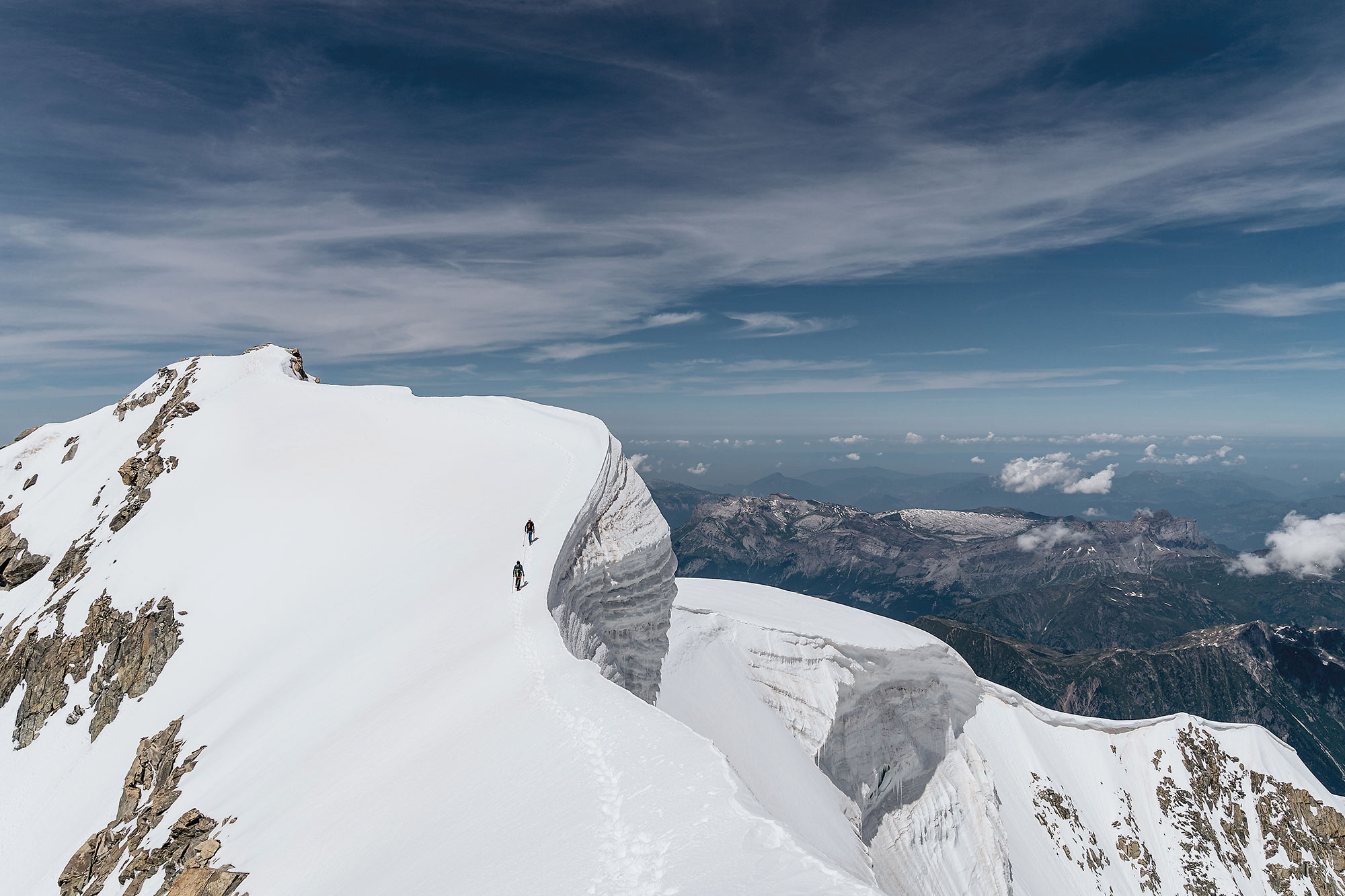
Armand Charlet, who was born in the early 1900s, was undoubtedly one of the most important mountaineers of his time, in a period of peace between the two World Wars, in which European mountaineers concentrated on the climbs of the last and most difficult “problems” of the Alps. In this case, we are talking about mountaineering challenges such as the north faces of Matterhorn, Grandes Jorasses and Eiger. Armand’s name has been associated for more than fifty years with the hardest climbs in the Mont Blanc range. The bibliography states that he has completed more than three thousand climbs and that he was particularly fond of the Aiguille Verte, which he climbed and descended a hundred times though 18 different routes, 7 of which brand new. Furthermore, Armand Charlet is also remembered for being the first mountaineer to have succeeded in the first traverse of all five Aiguilles du Diable at Tacul.
It was August 4th, 1928. With him, the guide G. Cachat and clients Robert Underhill and Mary O’Brien. This route takes the name of Arête du Diable. A little less than a century later I am lucky enough to be able to retrace and photograph Charlet’s mountaineering masterpiece.
We get back at the Torino Refuge as the sun is still shining. I order two beers to quench my thirst. No time to order the second round and it is already dinner time. I can’t stop thinking about tomorrow. What if I really underestimated the challenge? Am I pushing myself a little bit too far? Doubt is nothing more than a worm that feeds on its own sense of insecurity and grows in agitation.
“Matte, I’m a little nervous,” I says. Then, “I hope I can do everything and do it well. To be safe, I’d say to set the alarm for 01:30 am.”
Faletti looks at me like I’m kidding.
“Holy crap! Don’t you think it’s a little too much to get up so early?”
Now I’m the one thinking he’s making fun of me.
“Tomorrow I want to be at Col du Diable with the dark. I want to have time to look around before shooting. Do you know what my mom used to say? There’s no time…”
“…like the present.” Finishes Matte.
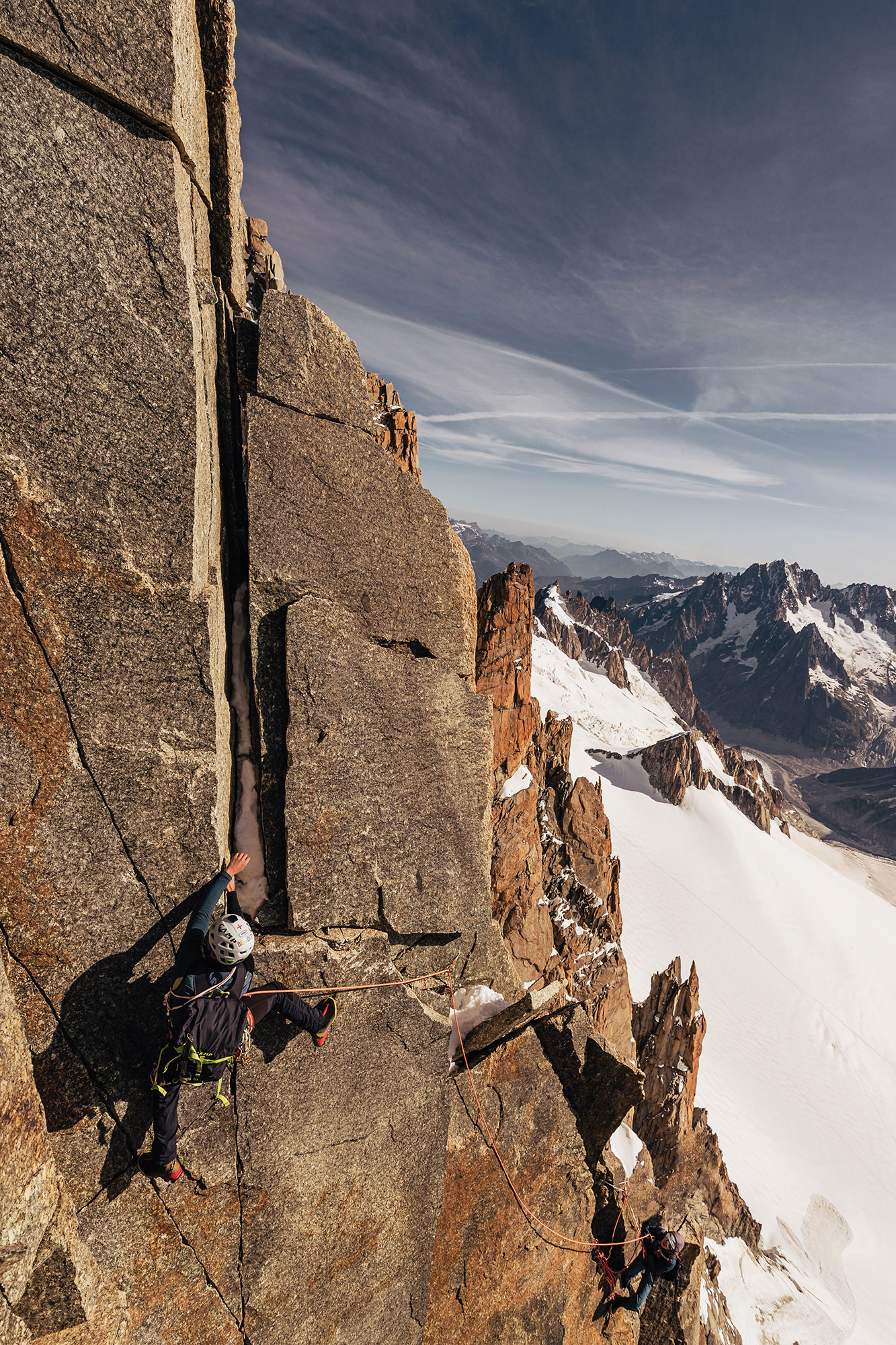
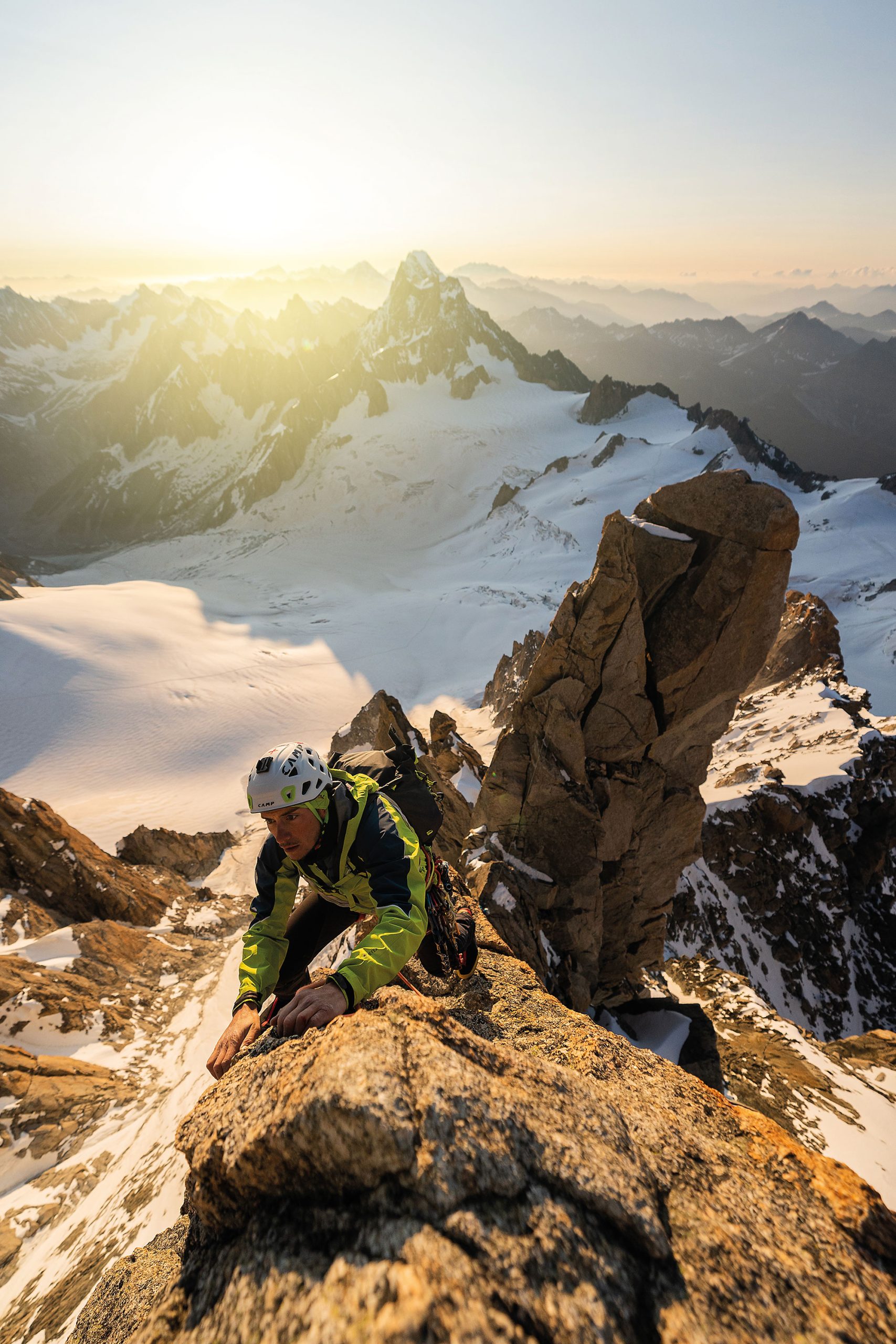
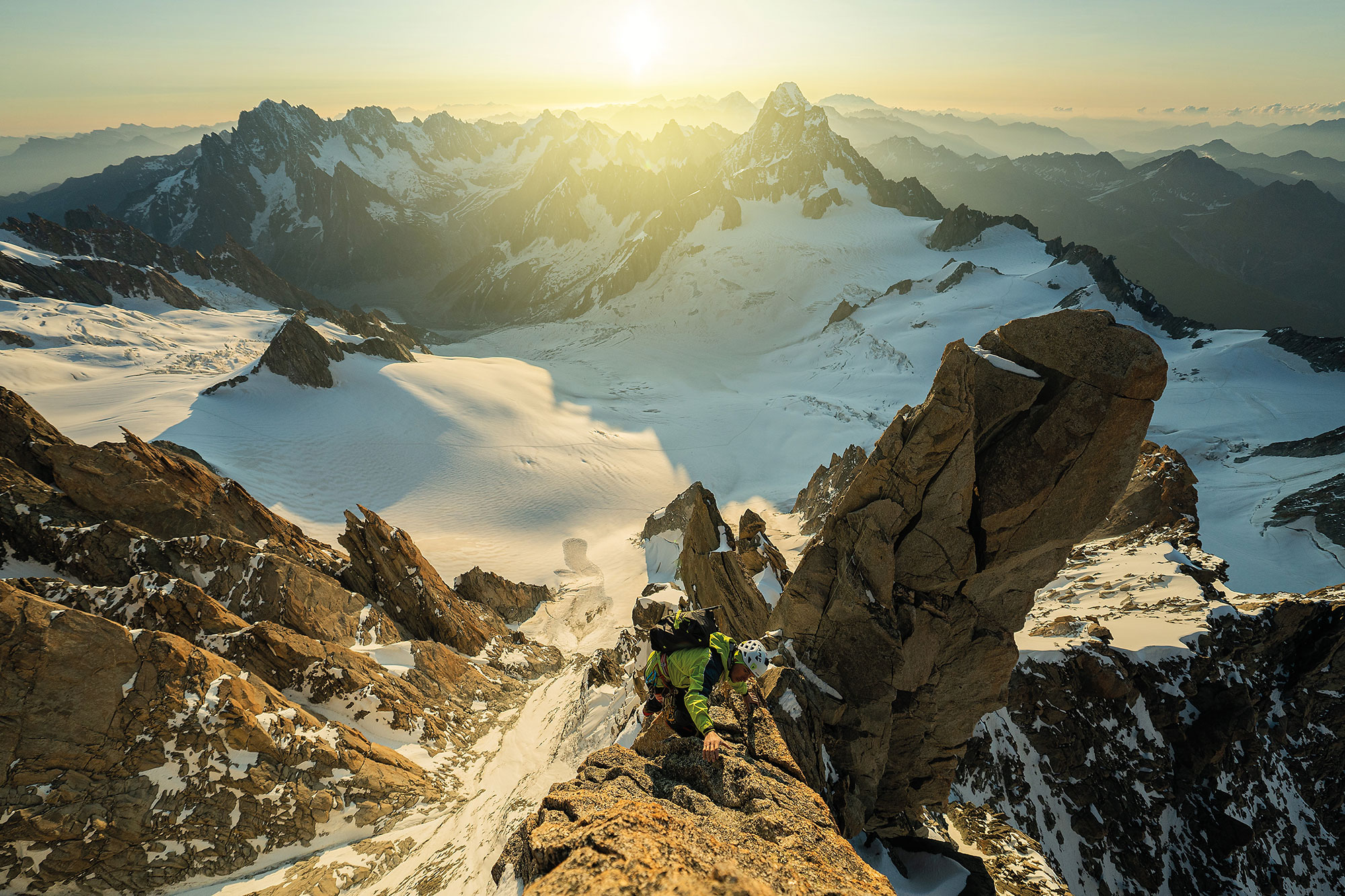
Often the agitation I feel is self-induced. I am aware of that.
Growing up does not imply maturing. And maturing doesn’t necessarily make you wise. I consider it a kind of poetics of inadequacy. In photography, my photography, I like not feeling up to par. It is an instinct that changes from necessity to instigation. It’s a kind of push that usually leads me to intense experiences and unexpected results.
For example, shooting in a mountain environment such as Arête du Diable is far from simple. There are objective and subjective difficulties.
The objective difficulties in organizing a photo shooting in a technical environment at 4000m are minimal, but fundamental: the weather forecast, the difficulty of the route, the availability of the people involved. The subjective difficulties, on the other hand, are, precisely, subjective. From my point of view it’s just a matter of choices.
As a photographer, I have always wanted to reject the comfortable solution. Simplicity pays and makes you safe, but it certainly doesn’t satisfy. Not always at least. And above all not me. I have always wanted to adapt myself, and consequently my photography, to the mountain rather than the other way around. I am convinced that the photographer’s ability to know how to move in the mountains is no more important than the ethics of the photographer himself. I’ll try to explain myself better. When the photographer tries to capture some images during a certain type of activity, it is assumed that he knows how to practice that type of activity, within the personal range of mental and physical limits. How he decides to capture those images is perhaps a much more important and underestimated aspect. I decided to give myself rules to follow about how to shoot and about what I want to convey. It is not just a matter of giving value to your work, but also and above all of giving value to your own self. Photographing is my job, but I never, ever want it to reduce it to a mere economic livelihood activity. It is the usual existential balancing act: to fully realize your own vision.
Mine is the following one.
Photography is the result of an experience.
I ask myself to reach a visual result of that experience that is as close as possible to the truth. Shooting in the mountains must represent the entirety of the experience of the photographer and of the protagonists involved. If there are those who believe in perfect photography, I prefer to believe in the perfection of photography. Perfection in the act of photographing is not often achieved. Indeed, it rarely happens. But when it happens it’s pretty cool.
When I am unable to guarantee the truth in the portrait of an experience, I seek compromise as long as it is acceptable. Especially in this historical moment, and forever in the future, the mountain does not need and does not deserve a fake portrait.

“Hey, where the hell are Ming and Leo…”
No time to finish the sentence and they knock me on the shoulder.
“Oh Pavana, I’ve been calling you for half an hour!” It’s Fede, whose face is furrowed by a smile that seems tired.
“Sorry we’re late, Leo is changing his clothes. Have you already eaten?”
Both Matteo and I nod.
“Yes, we were so hungry! But we can sit with you if you want.”
Fede and Leo will come with us tomorrow.
I’ve known Fede for a couple of years now. We worked together many times. The thing I like most about her is her availability and the desire to work well. Unlike many athletes I have worked with over the years, Fede understands the trust that companies place not only in the figure of the photographer who shoots, but in the athlete himself who gets to be photographed. She respects my work as a photographer and I respect her image as an athlete. And respect, as you know, is the basis of a friendship. On the other hand, I met Leo not less than a year ago in Ceresole, always together with Fede, always for some photos on the wall. Leo is always motivated, smiling, with a great desire to work. And this is essential for the success of a photo shoot.
We share a genepì a moment before the lights go out. We all need to sleep.
“Are you okay with waking up at 1:30 am?”
Fede immediately glares at me.
“God Pavana, how long do you think it will take us to reach the top?!” She says, “let’s wake up at 02:00.”
“01.45. Last offer.” I makes goo-goo eyes at her.
“All right. But just because I love you.”
She says it unconvinced, while Matteo and Leo say nothing. I can sense their loving “fucks” telepathically.
I close my eyes. And it’s already time to go.
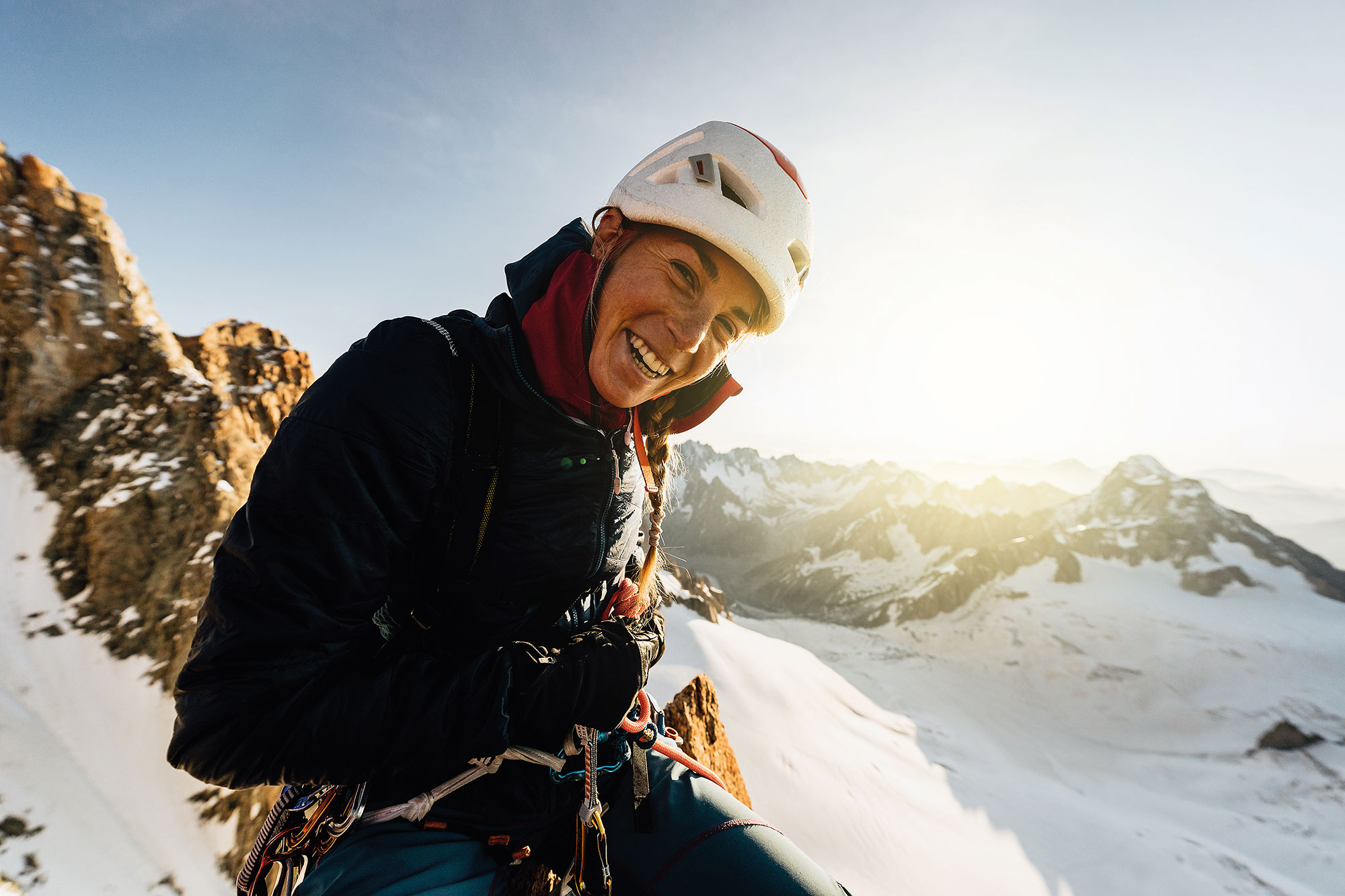
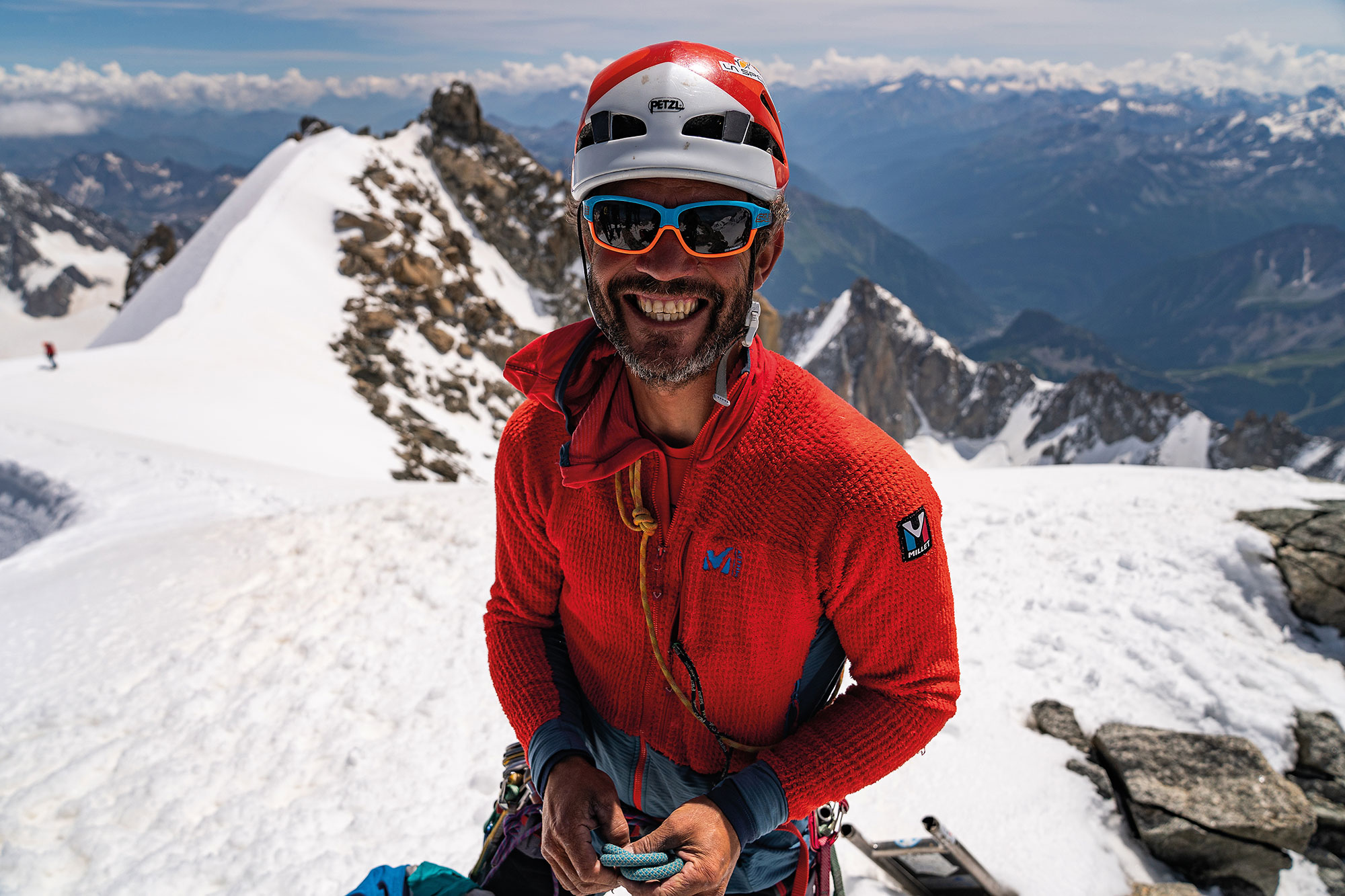
Not even 5 hours of sleep. Basically a sneeze. This thing that high altitude rarefies time as well as air can’t be explained.
We get up like puppets and get our backpacks and equipment like clumsy ninjas. At breakfast we are not alone, on the contrary, it looks like an exhibition of Modigliani’s portraits: elongated faces deformed by fatigue, eyes set by mistake into totally absent gazes, jaws in autopilot mode. Everyone draws from the cauldron of coffee in hopes of enjoying a quick and painless pit stop in the bathroom before leaving.
We’re ready. We sink into the dark morning with the aftertaste of bitter coffee still in the mouth.
The night is so black that Satelliti are invisible. The front procession on the Maudit’s Kuffner is a foretold Christmas decoration and a good point of reference for the entrance to the couloir on the opposite side of the Cirque du Maudit. We proceed fast on the excellent night freeze with a fast lopsided roll.
About twenty minutes later we are already climbing. We undress and move on quickly. Physically, I feel fine, but I also feel that it is the first time this summer that I have crampons on. Technically I struggle on the mixed supports and Faletti teases me to keep it light.
“Keep your back up straight! It seems like you’re walking on eggshells!”
He’s damn right. I could have prepared a little bit more, just one or two trips to regain confidence with the tools of the trade. The maternal proverb is a cicada in my brain: “There’s no time like the present”, she would say. I only thing about one word, “fuck!”
Fortunately, in these situations dark becomes your ally and annihilates the psychological component of the void. We proceed in preservation on a moderately steep slope. Fede and Leo are just above us and move like two wild animals in their own environment: elegant, silent, safe. Arriving on the hill, we realize that we have been on the move for less than two hours.
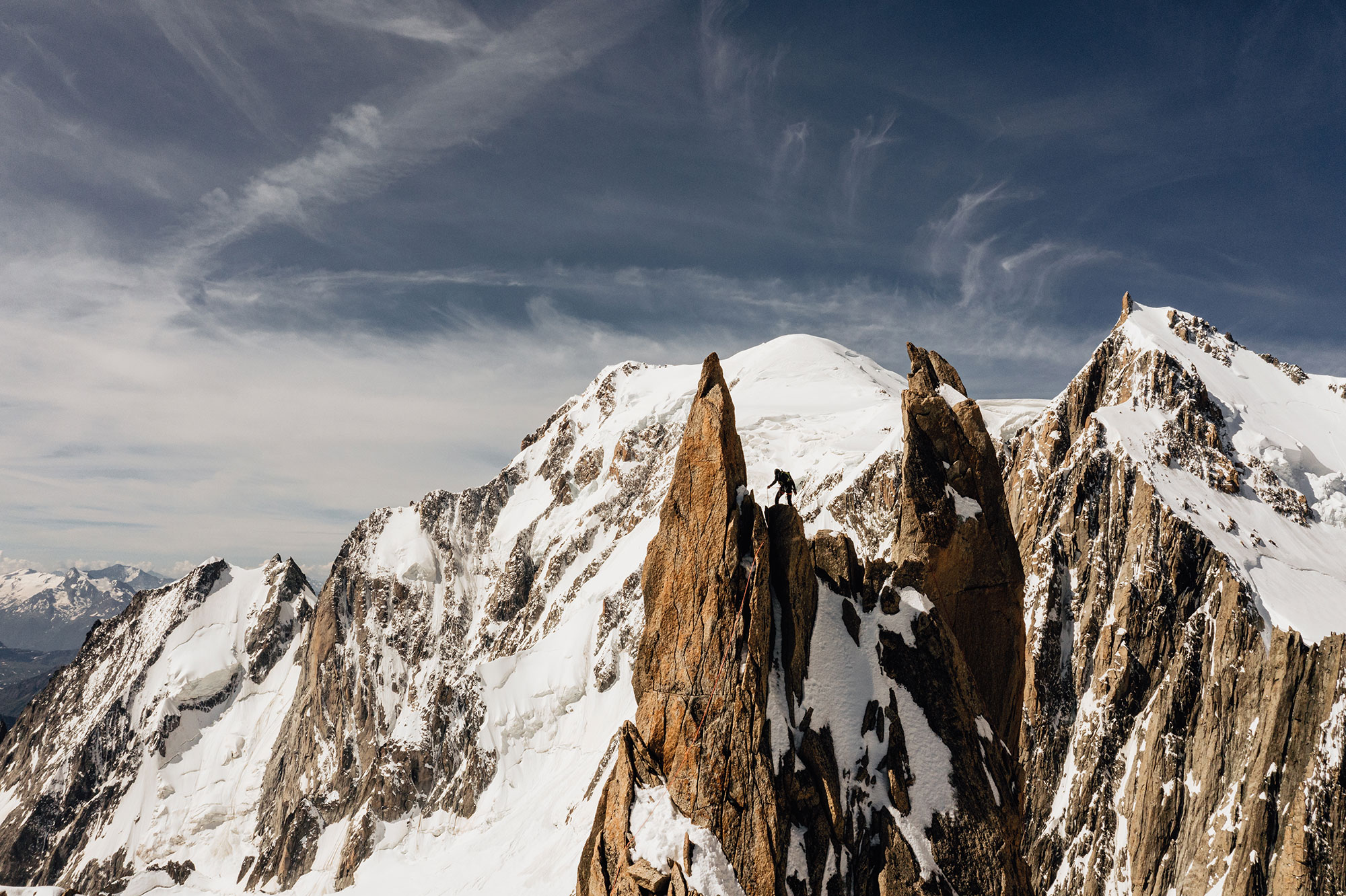
“Well done guys! We could almost have slept a half an hour more!” I say jokingly. They all glare at me, but then we all burst out laughing.
“Go to hell!” Adds Faletti.
From Col du Diable an incredible window opens up on the eastern part of the Blanc group, from Dent du Géant to almost the entire line of the crossing of the Grandes Jorasses and beyond. It is dawning.
I need to hurry and reach Corne du Diable, the first spire, to study the first shots, the ones I will take with the most beautiful light. I climb up together with Matte at a constant speed.
“Oh Matte,” I say “maybe there won’t be a lot of people today.”
And I add, while catching my breath for a second: “It will be great not to have many people around ruining the shot. “
I feel happy, in the right place at the right time. Unfortunately, that light feeling lasts as long as nothing, because bypassing yet another rocky pillar we find the first rope teams in lines.
Faletti doesn’t know whether to laugh or cry. “Fortunately there were going to be a few people today, huh?”
My answer comes out spontaneously: “Shit! We need to hurry.”
I take the first photos, juggling with the lenses in such a way as not to have too much disturbance in the frame. Dawn is wonderful and with the right calm I shoot my first photos. It goes without saying, but, photographically speaking, calm plays a fundamental role in moments like these.
Arête du Diable lights up and warms us up together with the snow, which still decorates the ridge late in the season. The rock passages are beautiful, aerial and anything but trivial, especially with boots. The descents, on the other hand, are always long and exposed. I only shoot where I think it is really worth it, because the sun soon begins to beat on our temples and the strong heat to dry our throats. It is a slow progression, whose rhythm is an elastic between waiting, action and quarrels with the other teams. However, the photos come by themselves, because it is objectively impossible to miss the beauty of the environment in which we find ourselves. We go on however in a safe way, fluid on that rocky skin, up to the top.
The summit cross is submerged by snow, while we feel as if attacked by the immensity of Mont Blanc. After 7 or 8 hours on the move, all four of us begin to feel a certain tiredness.
We quickly hug on the top, the desire to go back to the refuge is high.
Like every time, going back between the deep crevasses of the Mer de Glace seems endless. Immense is also that insane and senseless desire to relive such a day as soon as possible, only the bittersweet and nostalgic need to give time and space to the body and mind remains.
Here we are. And we are happy.
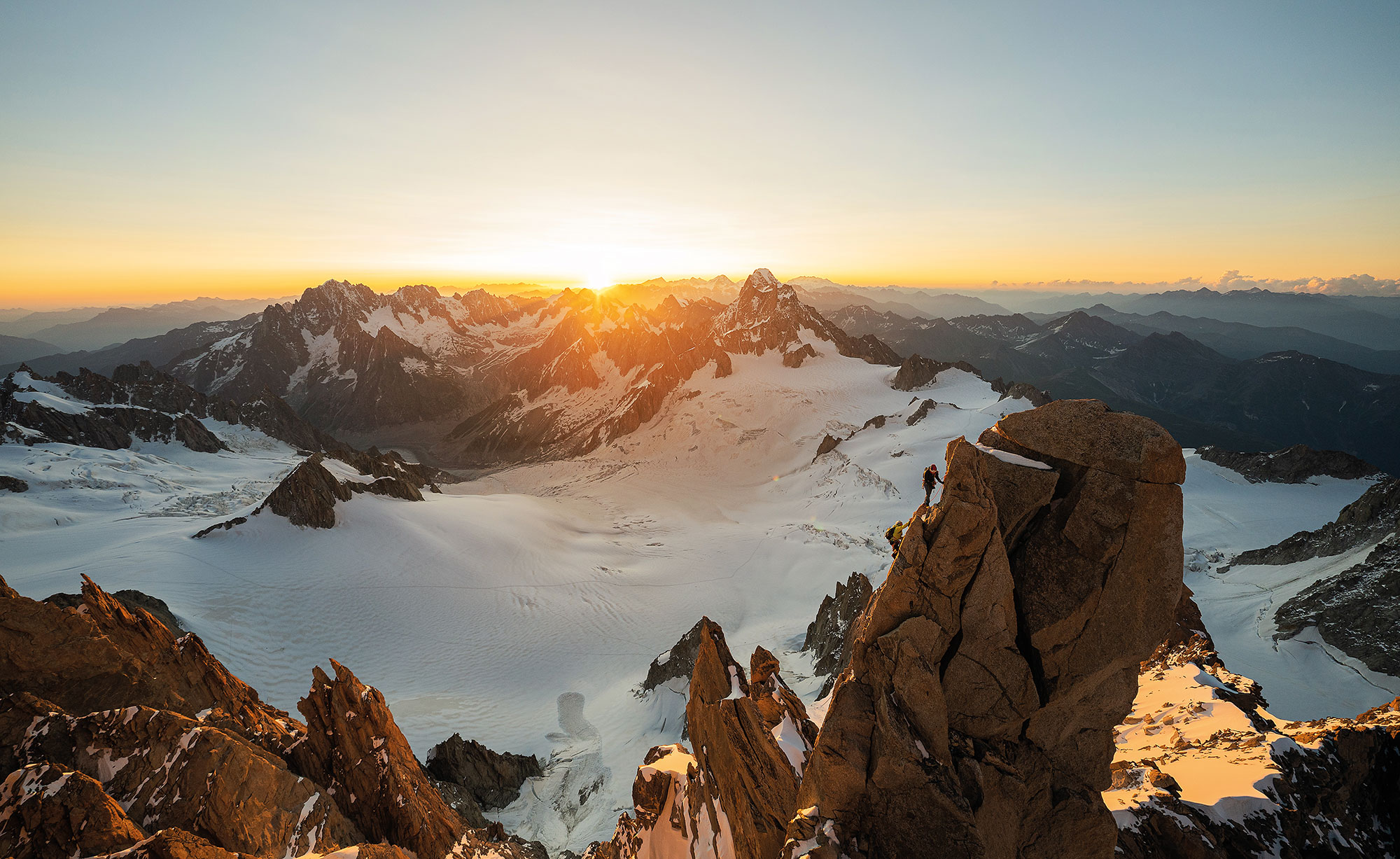
There’s always a lesson to learn, they say. Everyone has their own.
It can be to train properly before going out, to create your own little world on thin ice, or to believe in the importance of the values of trust and friendship.
A lesson to be learned can also be simply getting to know something more about the history of the route that will be retraced. I can say that when Matte told me the story of the Aiguilles du Diable and Armand Charlet, I spontaneously answered: “And who the hell is it Armand Charlet?”
There’s always a lesson to learn.
Others, instead, if you happen to forget them, you can always re-learn them.
